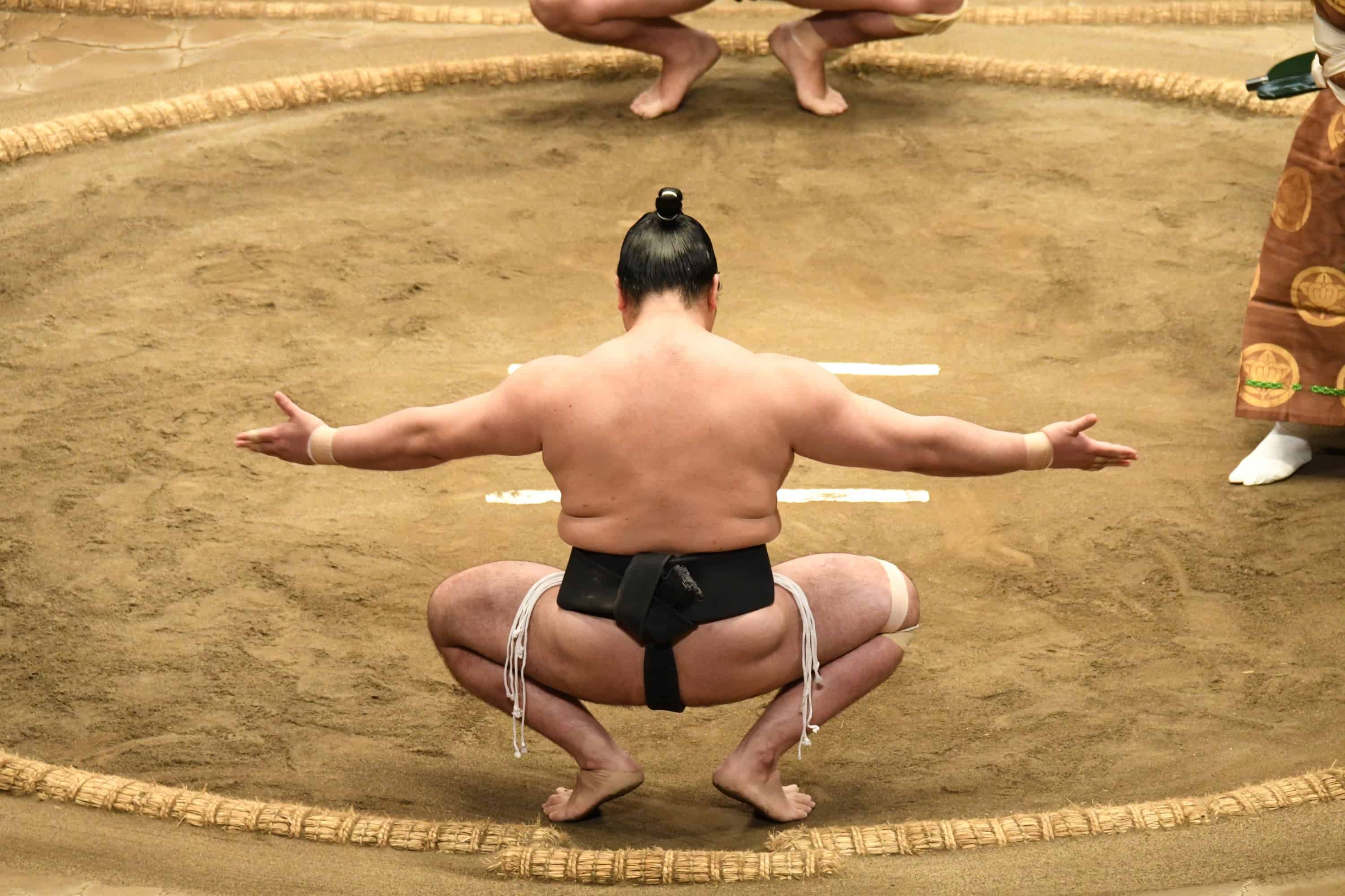With a signature top knot, silk belt and significant bulk, the classic look of the sumo wrestler is instantly recognizable to people around the globe. Though the visual may be familiar to many, travelers may not realize how complex and deeply traditional the practice of sumo wrestling is in Japanese culture.
The earliest records of sumo are from 712 A.D., when it is believed that sumo started as a Shinto ritual act performed to ask the gods for a bountiful harvest. It evolved as a form of entertainment for the imperial court and even as a practice for military training. Steeped in cultural and religious importance, sumo wrestling in Japan is very traditional — and an athletic experience like none other. Here’s what travelers need to know about Japan’s national sport, from how wrestlers train to where to catch a match.
The Sumo Lifestyle
Sumo wrestling is a lifelong profession. As teenagers, promising wrestlers, or rikishis, join sumo stables, where they live and train under the guidance of retired top wrestlers. Rank is very important in rikishi culture: lower-ranking wrestlers often cook and clean for those of higher rank and will receive the less-desirable training times. Rikishis only retire when they start to lose matches, as they cannot be demoted from the top rank, yokozuna.
Putting on bulk is crucial for success, so training rikishis maintain a strict schedule of exercise, eating and subsequent napping, to slow digestion. Chanko nabe, a hot pot dish full of vegetables, meats (like fatty pork) and eggs, is a staple in sumo stables, where there is a dietary emphasis on protein, rice and alcohol.
How Sumo Works
The rules of sumo are pretty simple, so even spectators new to the sport should be able to figure out what’s going on fairly quickly. Held on an elevated clay ring called a dohyo, a typical match will last anywhere from a few seconds to a few minutes at most. Rikishis perform a formal ceremony called the dohyo-iri and enter the ring. Whichever wrestler steps outside of the ring or touches the ground with anything other than the bottom of his feet is the loser.
Matches are supervised by referees known as gyoji who ensure that wrestlers don’t grab onto their opponent’s hair, hold onto the traditional mawashi (silk belt) or use their fists. There are no weight classes in sumo, so a smaller rikishi will often face off against a much larger wrestler, which is a spectator favorite.
Where to Watch
A sumo tournament is known as a basho, and it usually consists of 15 matches over a two-week period. Tournaments are held six times a year: three in Tokyo and one each in Osaka, Nagoya and Fukuoa. Keep in mind that even though they’re held in large, specialized sumo stadiums, tickets generally sell out, especially on holidays and weekends.
Sumo follows a strict ranking hierarchy. Wrestlers are classified into divisions that get updated after tournaments based on their performance, promoting or demoting them up and down the banzuke, or ranking list. Lower-division matches start early in the day, with the peak match occurring around 6 p.m., when the champions face off. The stadium tends to get more crowded throughout the day, as the more interesting matches occur last.
If you can’t make it to a basho, non-tournament and amateur matches are held throughout the year, or travelers can schedule a tour to a sumo stable and watch a morning practice.
But whether you sit ringside at a Tokyo championship match or catch an early-morning practice at a sumo stable, the balance of respect and excitement in a match is well worth experiencing.

